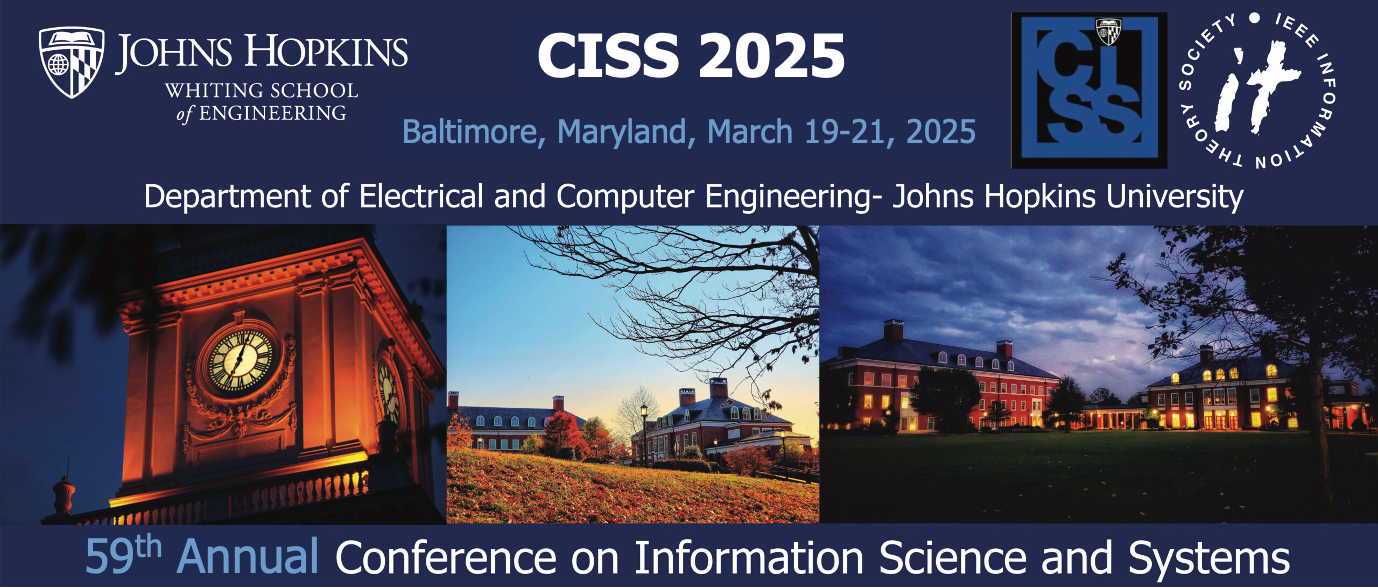Networks III
C2L-A: Networks III
Session Type: LectureSession Code: C2L-A
Location: Room 1
Date & Time: Friday March 24, 2023 (10:00-11:00)
Chair: Marie Therese Siew
Track: 6
| Paper ID | Paper Title | Authors | Abstract |
|---|---|---|---|
| 3218 | Active-IRS-Enabled Energy-Efficiency Optimizations for UAV-Based 6G Mobile Wireless Networks | Fei Wang{1}, Xi Zhang{2} | We propose the novel scheme to solve a multiobjective optimization problem over an unmanned aerial vehicle (UAV) communications system to jointly minimize the energy consumption of the UAV and ground users (GUs). In particular, the UAV communicates with multiple GUs using active intelligent reflecting surfaces (IRSs), which can actively amplify and thus significantly enhance the strengths of reflected signals. We develop an energy minimization scheme based on the multi-objective hierarchical deep reinforcement learning (DRL), by decomposing the formulated optimization problem into two-layered subproblems. By solving the upper-level subproblem, we derive the optimal UAV trajectory and GUs scheduling strategies to minimize the UAV’s energy consumption. By solving the lower-level subproblem, we obtain the IRS’s phase shifts and amplification factors and GUs’ transmit/receive beamforming to minimize the GUs’ energy consumption. Finally, we validate and evaluate the proposed schemes through simulations, which show that the UAV’s and GUs’ energy consumption can be significantly reduced by using the active IRS, when the thermal noise powers at the IRS are much smaller than those at the UAV and GUs. |
| 3153 | Distributed Detection in EH-Powered Mobile WSNs: Adaptive Transmission Over Temporally Correlated MIMO Channels with Limited Feedback | Ghazaleh Ardeshiri, Azadeh Vosoughi | We address distributed detection problem in a mobile wireless sensor network, where each deployed sensor stores randomly arriving energy units in a finite-size battery. Sensors transmit their symbols simultaneously to a mobile fusion center (FC) with M > 1 antennas, over temporally correlated fading channels. To characterize the time variation of the fading channel, we adopt a Markovian model and assume that the fading channel time-correlation is defined by the JakesClark’s correlation function. We consider limited feedback of channel gain, defined as the Frobenius norm of MIMO channel matrix, at a fixed feedback frequency from the FC to sensors. Modeling the randomly arriving energy units during a time slot as a Poisson process, and the quantized channel gain and the battery dynamics as homogeneous finite-state Markov chains, we propose an adaptive transmission scheme such that the J-divergence based detection metric is maximized at the FC, subject to an average per-sensor transmit power constraint. The proposed scheme is parameterized in terms of the scale factors (our optimization variables) corresponding to the channel gain quantization intervals. This scheme allows each sensor to adapt its transmit power in each time slot, based on its current battery state and the latest available channel gain feedback. |
| 3108 | Differentially Private Community Detection Over Stochastic Block Models with Graph Sketching | Mohamed Seif, Andrea J. Goldsmith, H. Vincent Poor | There has been significant recent progress on understanding the fundamental limits of community detection when the graph is generated from a stochastic block model (SBM). In this paper, we study the community detection problem over binary symmetric SBMs while preserving the privacy of the individual connections between the vertices. We present and analyze the associated information-theoretic tradeoff for differentially private exact recovery of the underlying communities through deriving sufficient separation conditions between the intra-community and inter-community connection probabilities while taking into account the privacy budget, and graph sketching as a speed up technique to improve the computational complexity of maximum likelihood (ML) based recovery algorithms. |
| 3017 | Parallel and Serial Two-Sensor Distributed Detection Considering Binary Symmetric Channel | Xingjian Sun{2}, Lei Cao{1}, Ramanarayanan Viswanathan{1} | In wireless sensor networks (WSNs), communication channels between sensors and fusion center (FC) are inevitably band-limited and error-prone. In this paper, we study the effect of binary symmetric channel (BSC) on a two-sensor distributed detection network with both parallel and serial topologies, in terms of the overall Bayes error of detection. For hard-decision (H-D) in the serial topology, we derive a set of coupled relations that the optimal sensors\' decisions should satisfy. For soft-decision (S-D) with both topologies, we obtain sub-optimal quantization schemes at local sensors, including the sensor thresholds and the codewords (CWs) assignment, using the genetic algorithm (GA). The obtained quantizers present an inherent trade-off between data representation and error control. For a 3-bit per sensor case, these quantizers work better than the one explicitly using a repetition code. |
